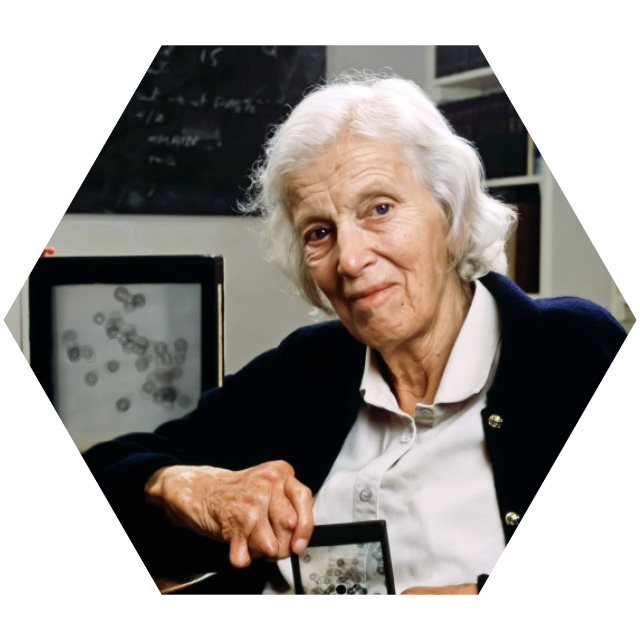Dorothy Crowfoot-Hodgkin

Dorothy Crowfoot (1910 - 1994) was born in 1910 and encouraged in her love of science from a child. She successfully persuaded her school to allow her to study chemistry rather than domestic science, and at 18 was admitted to study Chemistry at the University of Oxford. After moving to the University of Cambridge to pursue a PhD in X-ray crystallography, Dorothy then returned to Oxford to set up her own lab, where she remained for the rest of her career.
She devoted her life to the study of increasingly complex biological molecules, solving the 3D structure of cholesterol, penicillin, vitamin B12 and insulin (a feat that took 34 years – it contains 788 atoms). Dorothy was awarded the Nobel Prize for Chemistry in 1964 “for her determinations by X-ray techniques of the structures of important biochemical substances.”
Dorothy suffered from pain in her hands from an early age, first consulting a doctor during her PhD, and was diagnosed with rheumatoid arthritis at the age of 28. She refused to let her disability hold her back in her research, installing longer switches on her X-ray equipment to help her to continue to use it as her hands became increasingly swollen and disfigured. Iconic drawings of her arthritic hands by the renowned artist Henry Moore are displayed at the Royal Society and the Tate Gallery.
The Dorothy Hodgkin building at Keele was originally built to house the Department of Physics, and when Professor Hodgkin gave a lecture at Keele in 1988 the main lecture theatre in the building was named after her.

